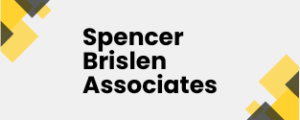When applying for jobs, there is a very high chance that you will have to write a cover letter. A cover letter accompanies your CV, and is often the first thing that employers read.
An original and thoughtfully written cover letter is just one method that employers may use to screen out applicants who are not sufficiently interested in their position or who lack the necessary basic skills.
So what exactly is a cover letter? Essentially, a cover letter is to demonstrate your motivation for applying, your commitment to the prospective role and the relevant skills you have to offer. While there are some important things that you should include, the content of the letter is left pretty much up to you. However, here are some tips on how to write a cover letter that will help you get noticed by employers.
What are the different types of cover letter?
Generally there are two types of cover letter.
The first type is a brief, generic letter which is fairly short and contains very little detail. Its purpose is to give a brief outline, confirm your interest in applying for the position and can serve as an introduction to your CV. The good thing about these cover letters is that, as they are generic, they can be prepared in advance and used for multiple applications. They require very minimal editing because they are geared to one type of job or similar positions within the industry.
Another advantage of these types of cover letters is that they can be speculative. A speculative cover letter can be used when there is not an advertised vacancy but are used as a direct approach to a prospective employer to enquire as to whether they have suitable positions. You can read more about speculative cover letters here.
The second type is a specific or targeted cover letter. As the name suggests, they are written with an individual vacancy in mind. This type of cover letter cannot be prepared in advance and each one will be composed to suit the specific role being applied for.
What type of cover letter do I need?
One of the first things that you need to do is to check whether the vacancy requires a cover letter. If it does, then you need to decide which kind of cover letter is required, and to help you, you need to look at the application method. For example, if the employer is asking you to upload your CV and there is a text box to paste your cover letter below it, then a generic cover letter is usually sufficient.
In the event that you have to send your CV and cover letter via email, use your letter as the body of the email with the CV as an attachment. This cover letter should be specific to the company you are emailing.
If the CV is part of a wider application process where you have to complete a multi-stage application form online, then a cover letter is not normally required.
Be aware, if an application requires a ‘personal statement’ or ‘additional information’ then this does not necessarily mean a cover letter. This is simply an opportunity to write how you match the criteria given in the Person Specification, not the job description.
How do I write a cover letter?
Once you have established what cover letter you will be writing, it’s time to actually write it. The purpose of a cover letter is not to repeat what’s in your CV. Your CV should already give the employer a good overview of your skills, qualifications and experience. Your cover letter will highlight your biggest selling points and draw the reader’s attention to the parts of the CV that are of most relevance or interest to them.
What should I include in my cover letter?
Start off by saying who you are and explain your purpose for writing. Then you will introduce your CV and highlight the main points.
This could be your experience, your qualifications or indeed any skills which you can match to their requirements. Finish with a call to action, stating what you expect to happen next. For example ‘I hope to have the opportunity of discussing this with you further at the interview’. When writing your cover letter, keep in mind that this will be the employer’s first impression of you, so make it count. Here are some things to remember;
- Show you have researched the role, the organisation and the industry
- Outline why you are attracted to the opportunity
- Highlight your unique selling points
How should I structure my cover letter?
Although your cover letter shouldn’t go on for more than one side of A4, it should still follow some structure:
- Paragraph One: This will be a positive, formal introduction outlining how you heard about the opportunity and why you are interested in the role and the organisation
- Paragraph Two: Introduce your CV, highlight the main points you want them to focus on and outline how the opportunity fits into your career plans.
- Paragraph Three/Four: Highlight your key skills and experiences and how they match the employer’s requirements. However, try not to simply repeat what you have already said in your CV.
- Paragraph Four/Five: End positively with a call to action and what you expect to happen next.
Top tips for writing a cover letter
- Use one side of A4 and four or five paragraphs
- Address your letter to a named person; if possible contact the organisation to ask who will deal with your application. If you don’t know then use ‘Dear Sir/Madam’.
- Keep the tone professional
- Ensure that there are no spelling or grammatical errors!
Hopefully this has given you an idea of what a cover letter is and the best way to go about writing one. If you follow our top tips then you will be well on your way to securing that all important interview.




